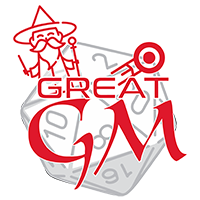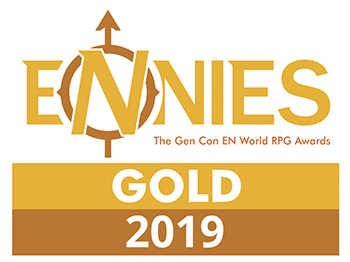Milase (MILL-ah-see)
the leading foundry town at the head of the Spine Mountains
Demographics
The city is mostly made of Numabians from the Memedi and related tribes. There is also a strong contingent of the Sawiwa and Hui Det tribes. There are a few of the Arglissima tribe, but they tend to live in their own settlements in the Fair Dunes. There are some non-Numabian people from Deefin Gate, usually merchants and traders moving goods from Milase to Deefin. Rarely do Piromese travel so far into the Borderlands, but there are a few adventurous souls who make the trip to marvel at the city's talented artisans. But they are almost always tourists and don't stick around for long.
Government
There is a mayor, usually a headsperson of the Memedi tribe. It is their responsibility to coordinate the foundry activities and provide support for regular life. Because it is a smaller permanent population, most of this is ensuring people talk to each other and smoothing over conflicts before they can escalate.
Industry & Trade
"There's no better forges than the ones at Milase. Puts our own manufacturers to shame." --Deefin Gate MerchantMilase is home to the best metal workers and jewelers in the world. Their specialty is transforming raw ores, minerals, and rocks into machinery, refined products, and complete works of art. Their main competitors are in Deefin Gate, but because the Gate doesn't have the ready fuel and water sources as Milase and Numabian miners prefer to sell to Milase, Deefin Gate is not a strong competitor. Rather, the two cities have worked out a strong partnership of trade where the output of Milase Foundries goes to Deefin Gate for further manufacturing or for export to Piromere. Deefin Gate sends fresh produce and agriculture goods from Piromere to Milase. Because of this strong trade, there is a well-maintained underground tunnel and ferry system that connects the two. Milase also has a well-maintained underground train system that goes along the entire Spine Mountain Range and connects with all the mining settlements along the Spine. This ensures that the ore produced from the mines gets to Milase and food and other supplies get from Milase to the mines.
Infrastructure
"Everything flows downward." --Memedi sayingThe water comes from underground springs fed by rain catching of the Spine mountains, which Milase is built into. Water flows downward through the settlement, such that water is first used for drinking and hygiene and then flows down to the foundries for industrial uses. There are lots of rock and jewel gardens both as public spaces and in people's private residences. Like most settlements in the Wastes, this city is built underground with tunnels to the surface for air exchange and light. The foundries are built closer to the surface to prevent build-up of fumes and to use the surfaces naturally hot temperatures to keep the forges burning. Sewage is collected into settling ponds. Solids are scraped up and used to feed and attract Tunbe Beetle to keep their populations stable, maintain tunnels, and dig new ones.
Districts
Foundry District
"The foundries of Milase is the rare testament to the Numabian potential as a whole should they ever choose to fully employ their talents as a people." -- Retired Explorer Rand BelmontThis is where the foundries and other industrial work is done. This is closest to the surface for easier air exchange. The high temperatures of the surface during the day helps heat up the forges with little fuel sources. It is also the lowest elevation of the city. This means all waste waters run through this district, which is what is used for the industrial processes, so it's not affecting drinking water sources. While there are mines around Milase, the most productive mines are elsewhere along the Spine mountain range. There is an underground rail system that runs the length of the Spine which can haul ore and other supplies between Milase and the mines. The rail depot is in the Foundry District, though there is a people drop off point in the Market District where train travelers can get off. The Foundry District's depot is more for supply loading.
Market District
This is where the artisans and millers sell their wares. Some are more established with permanent store fronts while others have pop-up tents, stalls, or hand push carts. This is where most of the activity happens and where most of the visitors spend their time. The artisans of Milase are the best metal workers and jewelers in the known world. As such, the Market District is also a wonderful place to go window shopping.Garden District
"There is no place in Thugodi more sublime in its artistry than the Garden District of Milase." --Retired Adventurer Max JamisonWhile there are rock gardens built throughout the city, this is where the artistry truly shines. They use the natural stalagmites and stalactites to create vertical appeal while also embedding jewels and metal works throughout. This doubles as a sacred community space and civil gathering place. The local residents don't thieve the jewels or artwork because it already belongs to them and the taboo of desecrating the communal beauty space. Also the jewels won't have much commercial value in the local area. Most thieves come from Deefin Gate and see it as an opportunity to get jewels without the mining. As such, visitors on their own are mistrusted and suspicious, requiring a local tour guide escort to reduce tensions. Any theft or desecration is met with severe punishment.
Residence District
This is where the permanent residents stay. It is the highest in elevation and the furthest into the mountains. This means that the temperature is more stable and the water is the freshest. But it does mean that air circulation and light are harder to get. There are fans that help maintain air quality and gas exchange with the surface to keep up with the growing population.Points of interest
The Garden District and Market District are what tends to draw in people from beyond the Spine. The Market place is a lively district. The Garden District is a beautiful melding of natural cave wonders with the talented craftsmanship of the city's artisans. This makes the Garden District a draw for the adventurous few Piromese who make it past the Borderlands and for the wealthy tourists of Deefin Gate.
Remove these ads. Join the Worldbuilders Guild









Comments